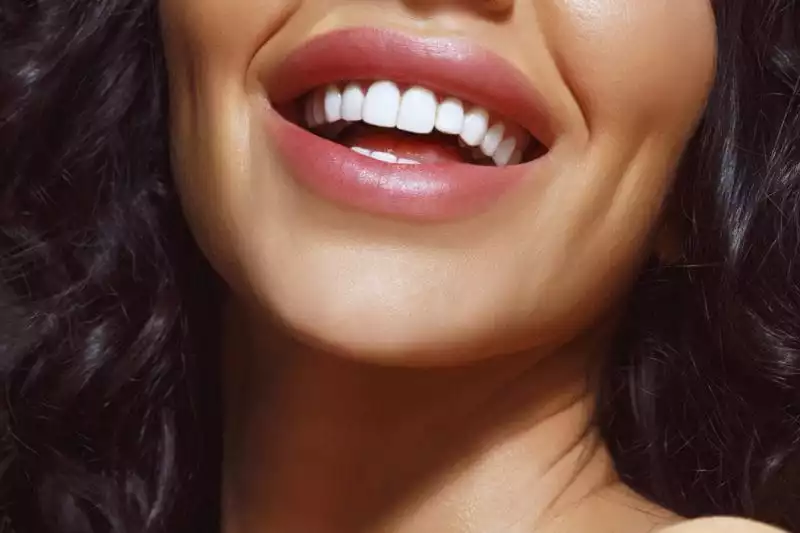
Smile! We have good news: it’s possible to gain that pearly-white smile everyone adores, even if you’ve struggled with discolored teeth in the past. As long as your teeth are reasonably healthy (free from oral health diseases like gingivitis or cavities), you can use simple tooth whitening strategies to achieve your whitening goals. We’ve created this list of tips utilizing a combination of at-home and in-pharmacy measures to help you make your teeth whiter and look your best.
Quick Tip: Just starting your tooth whitening journey? A trip to your dentist should always be your first step. It’s easier to achieve higher levels of whitening after issues like gingivitis, decay, and enamel wear are fixed!
1. Try a Whitening Toothpaste
If your tooth stains aren’t severe, you may find a high-strength whitening toothpaste is enough. These products work by gently abrading the surface of the tooth to expose unstained tooth tissue.
Not every whitening toothpaste is as effective as the next. Like any other product, some brands are mostly gimmick while others really focus on results. Generally, you should avoid opting for the cheapest product or pastes that only provide whitening results. Instead, pick a whitening toothpaste that contains fluoride and addresses any other issues you may have, like enamel repair or sensitivity, for best results.
Note: Although whitening toothpastes are effective, they should be used sparingly because continuous daily abrasion can eventually wear away tooth enamel or cause sensitivity. Use only a pea-sized amount of paste each time you brush.
2. Use Whitening Gel Trays
If regular whitening toothpastes aren’t enough, it may be time to step up to a stronger solution. Gel trays sit in the mouth for between 10 and 20 minutes at a time, enveloping the teeth in a bleaching solution that strips away stains. Depending on how stained or dark your teeth are, you may see results within as little as one treatment. Other patients may need several treatments spread out over a few weeks in order to make their teeth whiter.
Most whitening gel trays contain hydrogen peroxide compounded into a clear viscous gel. Although it is remarkably safe when used occasionally, every product and patient is different. Read all directions and ingredients carefully before use, and if you experience side effects, stop using the product and see your pharmacist.
Although you can purchase whitening gel trays over the counter at any pharmacy, they don’t always contain the right ratios for every patient. Because too much whitening solution can cause irritation and even pain, it’s far better to have your pharmacist compound it for you instead.
3. Try Charcoal
It’s a bit disconcerting to use charcoal toothpastes at first; the second you brush. Your mouth becomes as black as the charcoal within the toothpaste. Fortunately, charcoal itself only looks like a nightmare; it doesn’t stain. What it does do for most patients is lift surface stains and cleanse the mouth well through abrasion.
Like whitening toothpastes, charcoal can be abrasive. That’s why it’s best to use it once a day or for a few days in a row every few weeks. Never use charcoal after drinking or eating acidic foods and beverages as you may wear away pockets in the enamel, causing caries.
You can use activated charcoal plainly to brush your teeth — just open a capsule or sprinkle it onto your toothbrush and brush as you normally would. Or, you can mix charcoal into a pea-sized amount of toothpaste instead. If you choose the first method, schedule brushing with regular toothpaste either beforehand or afterward. Charcoal is helpful, but it won’t protect your enamel like fluoride and other standard toothpaste ingredients..
4. Use Prescription Whitening Products
When all other solutions fail to make your teeth whiter, it’s time to visit your dentist for a full-strength solution. Prescription whitening products are very strong, and that often means they can remove stains other products can’t access.
Most prescription whitening products are either applied directly to the teeth (like gel whitening trays), but they contain carbamide peroxide rather than hydrogen peroxide. This chemical is more effective at removing stains than its lesser cousin.
Unfortunately, the fact that prescription whitening products are so strong can also be a downside. Used inappropriately or too often, these solutions can wear away enamel, cause pain, or even create shallow pockmarks in the tooth that later turn into cavities. Never use another patient’s prescription products — see your dentist for your own assessment and monitoring protocol instead!
In Conclusion
Although most patients actively seek to make their teeth whiter, it’s far more important to seek healthy teeth instead. A little bit of discoloration is entirely normal, especially in older adults, and over-whitening can cause more issues than it resolves. The most effective way to remove stains and keep your teeth healthy is to brush and floss at least twice a day and schedule regular dental checkups every six months.

 info@burtsrx.com
info@burtsrx.com